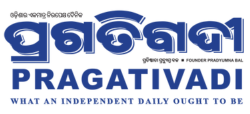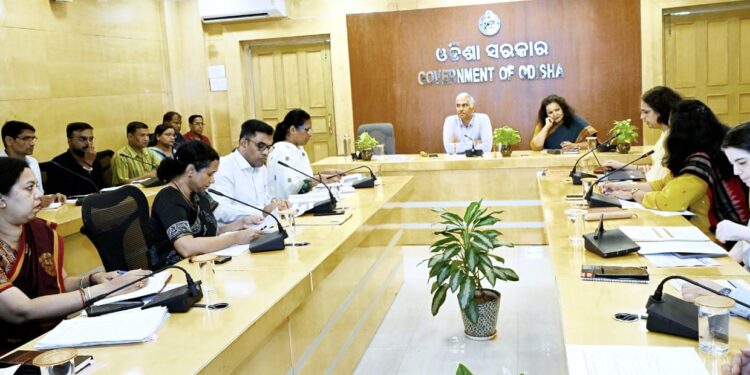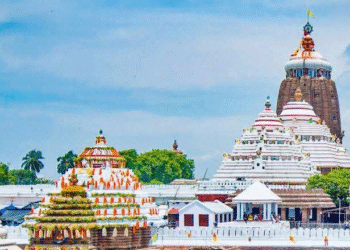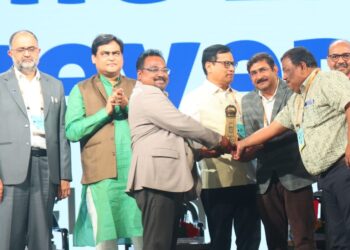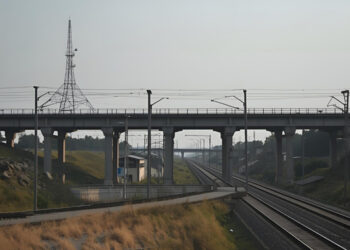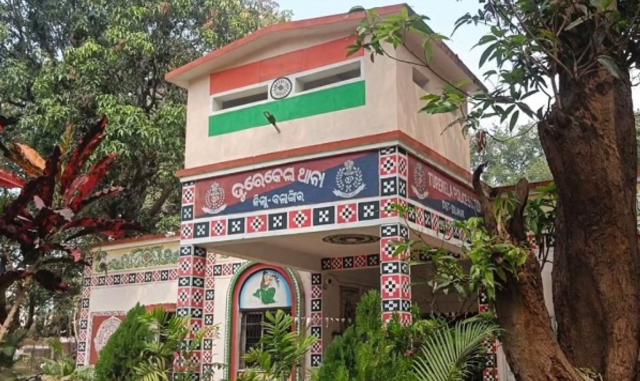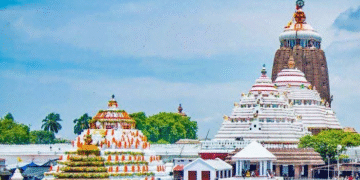A meeting of the State-Level Child Protection and Welfare Monitoring and Review Committee took place today in the Conference Hall of Lok Seva Bhawan, chaired by Chief Secretary Manoj Ahuja.
The meeting aimed to review the institutional and non-institutional frameworks for child protection and care in Odisha, emphasising the importance of strengthening collaboration among various departments and stakeholders.
During the meeting, participants discussed ongoing schemes, government mechanisms, and the contributions of NGOs and institutions involved in child protection. Special attention was given to the effective implementation of the Government of India’s Mission Vatsalya in Odisha.
Monisha Banerjee, the Director of Women and Child Development, delivered a comprehensive presentation on the various institutional and non-institutional arrangements for child protection in the state. Key national and state-level bodies, such as the Mission Vatsalya Approval Board, Mission Vatsalya Central Project Monitoring Unit, State Child Protection Society, State Adoption Resource Agency (SARA), and the three-tier Child Welfare and Protection Committees at the state, district, and Gram Panchayat levels, are actively functioning in Odisha. Currently, the state has 30 District Child Protection Units (DCPUs), 31 Child Welfare Committees (CWCs), 34 Juvenile Justice Boards (JJBs), 36 dedicated Juvenile Police Units, and 220 Child Care Institutions (CCIs). There are approximately 8,150 children under institutional care and 6,317 children under non-institutional care.
The adoption trend in Odisha has demonstrated steady growth over the past three years. Increased awareness, streamlined processes, and strengthened systems have led to a rise in in-country adoptions, with the number of adopted girl children exceeding that of boys each year. Odisha has 160 children’s homes, 33 specialised adoption agencies, 12 open shelters, 7 observation homes, and 7 special homes.
Out of the 8,150 children in CCIs, 98% have been enrolled for Aadhaar. Currently, 672 children are pursuing vocational education, and 8,130 individuals have received training through 264 different programs. While 211 children have secured employment, 79 have become self-employed. The state also provides marriage assistance to children leaving institutional care. At present, there are 41 Child Help Units/Help Desks and a State Control Room functioning effectively to provide support to children in need. Financial assistance under the Ashirbad Yojana is being extended to eligible children. To forge a unified, rights-based Adoption Strategy aimed at strengthening family-based care and accelerating adoptions in Odisha, the Adoption Conclave 2025 was held in May 2025.
Key focus areas discussed included mental health support and counseling for traumatized children, the promotion of smart education through e-learning, and the use of video conferencing facilities for juvenile case hearings. Additionally, the meeting addressed the monthly financial aid for continuing education under the Ashirbad Yojana and the encouragement of sports and cultural activities through initiatives like the State-Level Mahak and Utsah programs.
There was a comprehensive discussion on the yoga sessions conducted in child care institutions, exposure visits and training programs at World Skill Centres, and vocational training for children in observation homes.
For prompt child protection assistance, the Child Helpline 1098, the Women Helpline 181, and the Emergency Response support system 112 have been integrated. The effective operation of the Child Helpline 1098 in all districts was highlighted by Principal Secretary, Women & Child Development, Mrs. Shubha Sharma, who presented the current status.
Under the Yashoda Scheme, orphan surveys are conducted every four years, and the Amari Shishu Portal is being operationalized to update all child care and protection data digitally. So far, over 51,000 children have benefited from the Ashirbad Yojana, receiving various forms of assistance. Plans for establishing Child Help Centres at railway stations and bus stands were also discussed.
The Chief Secretary emphasised the importance of strengthening both institutional and non-institutional mechanisms for child protection and care through the collective efforts of all departments, including Women & Child Development, School & Mass Education, Higher Education, Health & Family Welfare, Panchayati Raj and DW, Home, and Skill Development and Technical Education.
The Chief Secretary also directed that district-level monitoring be made more active and that child care institutions work with greater commitment and accountability. Additional Chief Secretary & Development Commissioner Smt. Anu Garg advised Secretaries and senior officers of various departments to visit schools and child care institutions during their district tours.
Principal Secretaries, Commissioner-cum-Secretaries, and senior officials from various departments attended the meeting.
